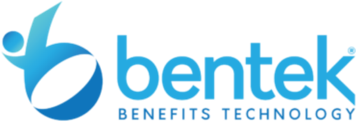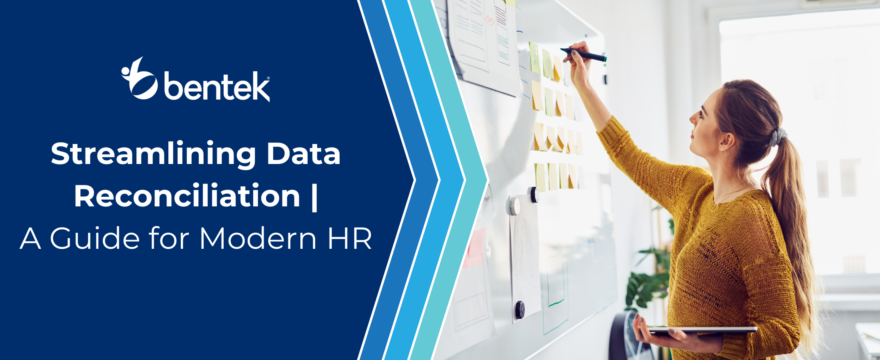In the intricate world of Human Resources (HR), the accuracy of data is paramount, however, according to researchers from Access, just 4% of HR professionals have complete faith in the accuracy of their data to make decisions. This is a worrying statistic in a data-rich role such as HR and benefits where a single error can lead to payroll discrepancies, compliance issues, and employee dissatisfaction. Thus the need for a streamlined data reconciliation process.
This article explores the importance of streamlining data reconciliation processes in HR, highlighting the benefits of automation, accuracy, and efficiency. Let’s delve into the world of data reconciliation in HR, unraveling the strategies that lead to improved accuracy, efficiency, and ultimately, a more harmonious workplace.
Introduction: What is Data Reconciliation in HR?
In Human Resources, data reconciliation serves as the cornerstone for ensuring seamless operations across various facets such as payroll, benefits administration, and employee information systems. This process, fundamental yet intricate, involves the meticulous comparison and alignment of information from disparate sources to guarantee both consistency and accuracy.
- The Essence: At its core, data reconciliation within HR aims to bridge the gaps between different data streams, ensuring that every piece of information, from employee hours worked to benefits allocated, aligns across the board.
- The Stakes: The significance of this operation cannot be overstated. Accurate data reconciliation forms the bedrock of HR efficiency, ensuring regulatory compliance, precise payroll and benefits distribution, and fostering an environment of trust and satisfaction among employees.
- The Pitfalls: Conversely, the repercussions of discrepancies in data reconciliation can be vast, ranging from financial losses to legal complications and, not least, the erosion of employee morale and trust.
- A Pervasive Challenge: Echoing the concerns of the industry, there are two major causes for alarm.
- A study by Gartner found that 80% of organizations struggle with data quality issues. This indicates a widespread problem that extends beyond HR.
- IBM research suggests that poor data quality costs businesses an average of $12.9 million per year, underscoring the financial implications of inaccurate data.
In this exploration, we embark on a journey to understand the nuances of streamlined data reconciliation in HR, uncovering the practices that promise not just to mitigate risks but to elevate the efficiency and integrity of HR operations to new heights.
Why Streamlining Data Reconciliation Matters
In the labyrinth of HR operations, the process of data reconciliation emerges as a pivotal yet often underestimated task. The traditional manual handling of this task not only proves to be laborious but is fraught with the potential for human error, leading to data inconsistencies that can ripple through HR systems with far-reaching consequences.
-
The Issue with Manual Processes
- Manual data reconciliation, by its nature, is a time-intensive activity that demands meticulous attention to detail. HR professionals, in their quest to ensure the accuracy of employee data across payroll, benefits, and information systems, often find themselves ensnared in the web of spreadsheets and paperwork.
- The susceptibility to human error in this manual process cannot be overstated. A single mis-keyed digit or overlooked entry can lead to discrepancies in payroll, erroneous benefits allocation, or compliance violations—all of which can have significant financial and reputational repercussions for an organization.
- Beyond the immediate errors, the manual reconciliation process contributes to a slow, cumbersome operational pace, hampering HR’s ability to respond swiftly to evolving organizational needs or regulatory changes.
-
The Transformative Power of Streamlining
- Embracing streamlined data reconciliation methods, particularly those leveraging automated solutions, can dramatically alter the HR landscape. A compelling statistic from Deloitte illuminates the impact: Organizations leveraging advanced analytics capabilities in HR can reduce reconciliation errors by up to 30%.
- The introduction of automated tools and integrated HR systems paves the way for a more cohesive data management approach. By automating the reconciliation process, organizations can ensure real-time updates and cross-verification of data across platforms, minimizing the risk of discrepancies and the need for retroactive corrections.
- A streamlined reconciliation process, fortified by technology, offers more than just error reduction and time savings. It provides a strategic advantage by freeing up HR professionals to focus on value-adding activities. Whether it’s developing talent, fostering employee engagement, or strategizing for workforce growth, HR can shift its focus from the clerical to the core functions that drive business success.
In the arena of HR operations, the movement towards streamlined data reconciliation is not just a trend but a strategic imperative. The adoption of automated solutions and the transformation of reconciliation processes not only enhance operational efficiency but also fortify the foundation of HR’s role in organizational success.
By reducing errors, saving time, and reallocating resources to more impactful activities, HR departments can contribute more significantly to the strategic objectives of their organizations, ensuring a more engaged, satisfied, and productive workforce.
The Role of Technology in Data Reconciliation
The evolution of HR operations significantly hinges on the integration and application of technology, particularly in the domain of data reconciliation. According to Mercer’s Benefits Technology 2023 report, 58% of HR professionals are prioritizing creating global consistency in benefits. The transition from manual, cumbersome processes to automated, streamlined systems marks a pivotal shift, enabling HR departments to achieve unprecedented levels of efficiency and accuracy.
Modern HR Technology Platforms
- Automation at the Forefront: Modern HR technology platforms have revolutionized the way data reconciliation occurs within organizations. These platforms boast a myriad of features designed to automate and streamline the reconciliation process, including integration capabilities that allow for seamless communication between disparate HR systems, such as payroll, benefits administration, and employee information databases.
- Real-Time Updates and Alerts: One of the standout features of these platforms is their ability to provide real-time data updates. This ensures that any changes in one system are immediately reflected across all integrated systems, maintaining data integrity and consistency. Additionally, automated discrepancy alerts notify HR professionals of any inconsistencies, allowing for prompt resolution before they escalate into more significant issues.
AI and Machine Learning
- Predictive Analytics: The incorporation of AI and machine learning into HR data reconciliation tools has been a game-changer. These technologies offer predictive analytics, which can forecast potential discrepancies based on historical data trends, effectively preempting issues before they arise.
- Anomaly Detection and Resolution: Beyond prediction, AI enhances anomaly detection, identifying outliers that deviate from expected patterns. This capability is critical in flagging issues that may otherwise go unnoticed. Moreover, AI can suggest automated resolution strategies, streamlining the rectification process and minimizing the need for manual intervention.
Impact of Integrated Data Systems
- Enhanced Accuracy and Timeliness: A significant statistic from SHRM highlights the transformative impact of technology on HR data management: “More than 70% of HR professionals say that integrated data systems improve the accuracy and timeliness of their reconciliation processes.” This underscores the critical role that integrated, technology-driven solutions play in enhancing the efficiency of HR operations.
Popular Data Reconciliation Tools
- Integrated Benefits Administration Software Systems: In the quest for streamlined data reconciliation, integrating Benefits Administration Software systems have emerged as frontrunners. These platforms are renowned for their in-built reconciliation functionalities, automating the cross-verification of data across multiple HR operations. The inherent flexibility and scalability of these systems further enhance their appeal, accommodating the evolving needs of organizations.
- Features and Functionalities: These tools are equipped with advanced features such as automated data audits, integrating HR, Payroll, and Benefits, while providing customizable alerts for discrepancies. By consolidating data in a centralized, accessible platform, these systems not only facilitate streamlined reconciliation but also provide a foundation for data-driven decision-making in HR.
The integration of modern technology into HR data reconciliation processes signifies a transformative shift towards efficiency, accuracy, and strategic focus. By leveraging AI, machine learning, and sophisticated HR technology platforms, organizations can transcend the limitations of manual processes, paving the way for a future where data integrity and operational excellence are the cornerstones of HR operations.
Steps to Implementing Streamlined Data Reconciliation in HR
Implementing streamlined data reconciliation within HR requires a strategic and systematic approach. As businesses evolve, so do their data management needs, necessitating a flexible yet robust system to keep HR operations running smoothly. Here, we detail a step-by-step guide to achieving streamlined data reconciliation in HR, focusing on minimizing errors, reducing manual labor, and ensuring compliance.
-
Assessing Current Data Systems
- Identify Discrepancy-Prone Areas: Begin by meticulously evaluating your current data systems to pinpoint where discrepancies most frequently occur. This could range from payroll discrepancies to inconsistencies in employee benefits information.
- Map Data Flow: Understand how data flows between different systems within your organization. This mapping will reveal potential bottlenecks or areas where data becomes fragmented or siloed.
- Stakeholder Feedback: Engage with key stakeholders, including HR staff, IT personnel, and department heads, to gather insights on the challenges they face with the current data reconciliation processes.
-
Selecting an Integrated Platform
- Criteria for Selection: Prioritize platforms that offer seamless integration between HR, payroll, and benefits systems. This integration is crucial for real-time data exchange and minimizing data silos.
- Consider Scalability: The chosen platform should not only meet current needs but also have the capacity to scale as the organization grows in size and complexity.
- Vendor Evaluation: Diligently evaluate potential vendors based on their track record, customer support, compliance features, and the ability to customize the platform to fit your unique requirements.
-
Automating Data Audits
- Regular Schedule: Establish a regular schedule for automated data audits to ensure ongoing accuracy and integrity of HR data. This helps in identifying and rectifying discrepancies before they escalate.
- Real-Time Alerts: Utilize platforms that offer real-time alerts for discrepancies, enabling immediate action to resolve issues as they arise.
- Audit Trails: Ensure the system provides detailed audit trails for all changes and updates made to the data. This is essential for accountability and compliance purposes.
-
Continuous Review and Adjustment
- Adapt to Changing Needs: The HR landscape is ever-changing, influenced by new regulations, organizational changes, and technological advancements. Regularly review and adjust your reconciliation processes to stay ahead.
- Feedback Loops: Create feedback loops with end-users and stakeholders to gather insights on the effectiveness of the current reconciliation process and areas for improvement.
- Training and Support: Provide ongoing training and support for HR staff to ensure they are proficient in using the new systems and tools. This fosters a culture of continuous improvement and adaptation.
-
Harnessing the Power of Data for HR Efficiency
- Empirical Evidence: According to a statistic by ADP, organizations that implement regular automated audits witness a 20% improvement in data accuracy within six months. This significant improvement underscores the efficacy of automated systems in enhancing HR data management and operational efficiency.
By following these steps, organizations can navigate the complexities of data management within HR, transitioning from disjointed and manual processes to a streamlined, automated, and integrated data reconciliation system. This transition not only elevates the efficiency of HR operations but also significantly reduces the risk of compliance issues, financial discrepancies, and employee dissatisfaction, thereby fostering a more dynamic, responsive, and data-driven HR department.
Conclusion: The Future of Data Reconciliation in HR
The landscape of HR operations stands at the brink of a transformative era, with streamlined and automated data reconciliation leading the charge. As we have navigated through the multifaceted benefits and strategic importance of data reconciliation in HR, it becomes evident that the future of HR operations leans heavily on the efficiency, accuracy, and compliance that these processes ensure. It is a future where HR professionals can dedicate more time to strategic initiatives, thanks to the automation of time-consuming tasks.
The Critical Role of Streamlined Data Reconciliation
- Enhanced Operational Efficiency: The adoption of streamlined data reconciliation processes is pivotal in enhancing the operational efficiency of HR departments. This efficiency is not just about doing things faster but doing them more accurately and with greater compliance.
- Accuracy and Compliance at the Forefront: With accurate data reconciliation, HR operations minimize the risk of compliance issues and ensure that employee data across payroll, benefits, and other systems is consistent and up-to-date.
- A Strategic Advantage: Streamlined data reconciliation offers HR professionals a strategic advantage, enabling them to focus on initiatives that drive employee engagement, talent development, and organizational culture.
Evaluating Current Reconciliation Practices
HR professionals are encouraged to take a critical look at their current data reconciliation practices. Identifying inefficiencies and gaps is the first step towards transformation. Consider:
- Assessing for Discrepancies: Regular audits of your current systems can reveal discrepancies that may have gone unnoticed, offering opportunities for improvement.
- Benchmarking Against Best Practices: Understanding industry best practices in data reconciliation can provide valuable insights into how your operations could be enhanced.
- Seeking Feedback from Stakeholders: Engaging with stakeholders, including employees and management, can reveal pain points and areas for improvement in your reconciliation processes.
Moving Towards a Streamlined Future
The journey towards streamlined data reconciliation in HR is both a necessity and an opportunity. HR professionals stand to gain significantly by adopting modern tools and technologies that facilitate these processes. Here’s how you can start:
- Conduct a Comprehensive Audit: Begin by assessing your current data reconciliation practices for any inefficiencies or outdated methods that could benefit from automation and integration.
- Explore Modern Tools and Technologies: Investigate the modern tools and technologies available that could automate and streamline your data reconciliation processes. Look for solutions that offer real-time data updates, integration capabilities, and automated discrepancy alerts.
- Implement with a Focus on Continuous Improvement: Adopting new technologies is not a one-time task but an ongoing process of continuous improvement. Implement changes with scalability in mind and stay abreast of new developments in HR technology that can further optimize your operations.
The future of HR operations is undeniably linked to the efficiency and efficacy of data reconciliation processes. By embracing streamlined and automated solutions, HR professionals can ensure that their operations not only meet the current demands of compliance and accuracy but are also poised to adapt and thrive in the ever-evolving landscape of human resources management.
In wrapping up our comprehensive exploration of data reconciliation within the HR landscape, we’ve delved into the pivotal role that streamlined and automated processes play in augmenting the precision and efficiency of HR operations. From enhancing data accuracy across payroll, benefits, and compliance records to significantly reducing the time and resources devoted to manual data checks, the benefits of embracing modern reconciliation practices are clear and impactful.
As HR professionals, the onus is on us to continuously seek out and implement solutions that not only mitigate the risk of compliance penalties but also free up valuable time to focus on strategic initiatives that drive organizational success. The adoption of advanced technologies, including AI and machine learning, offers a promising pathway toward achieving a more reliable, efficient, and error-free data reconciliation process.
Did you find this article insightful? Check out more like it from the Bentek Blog!




